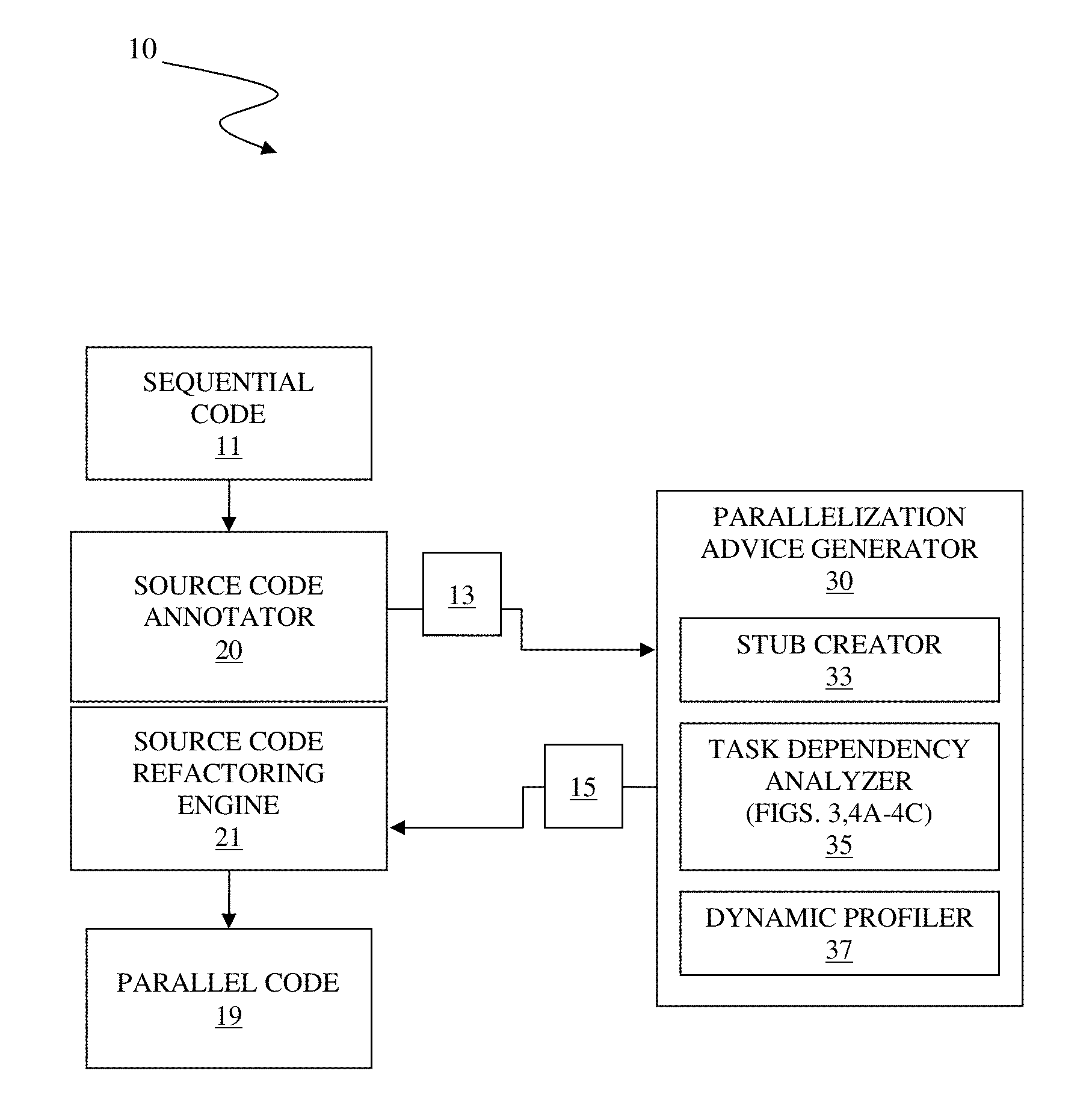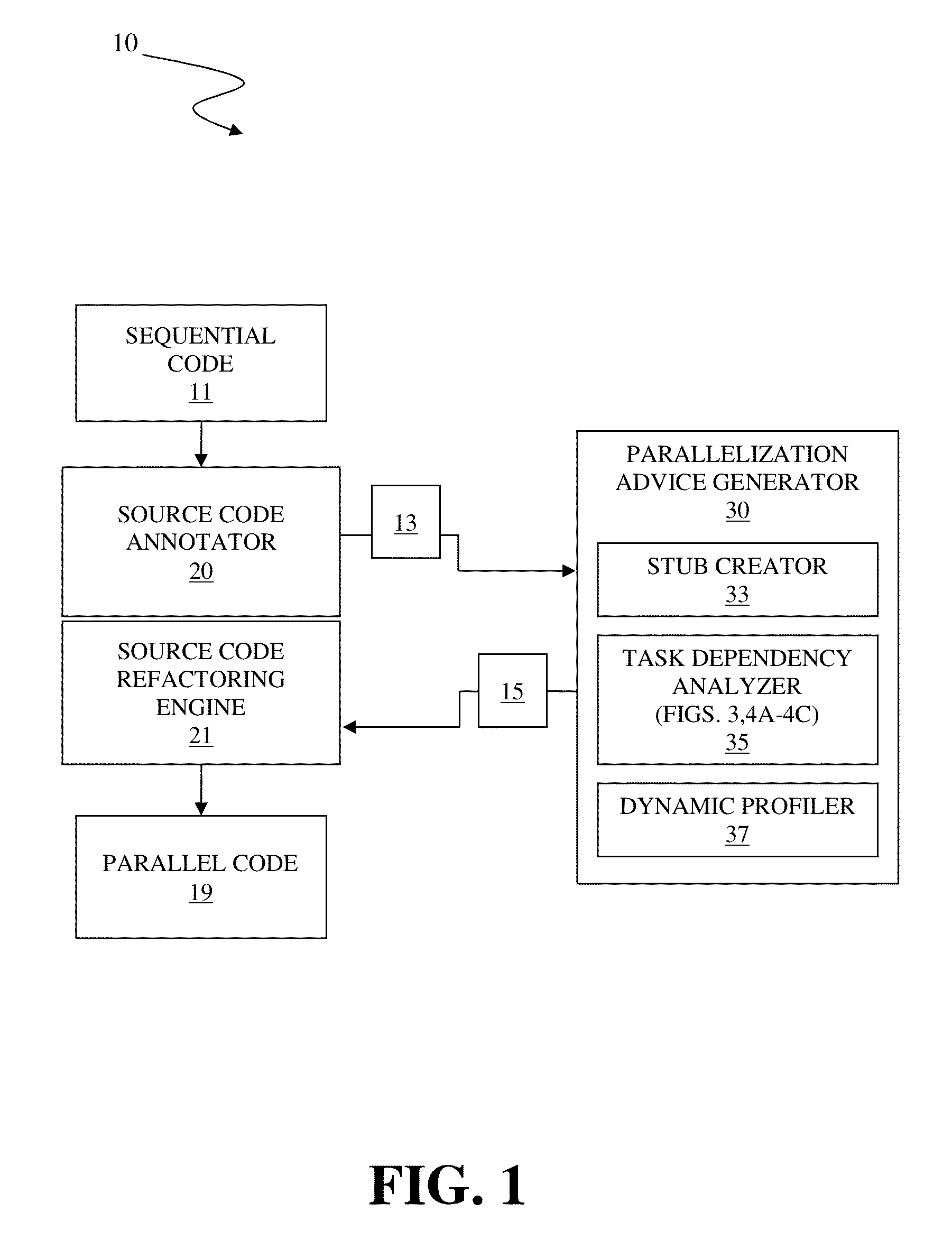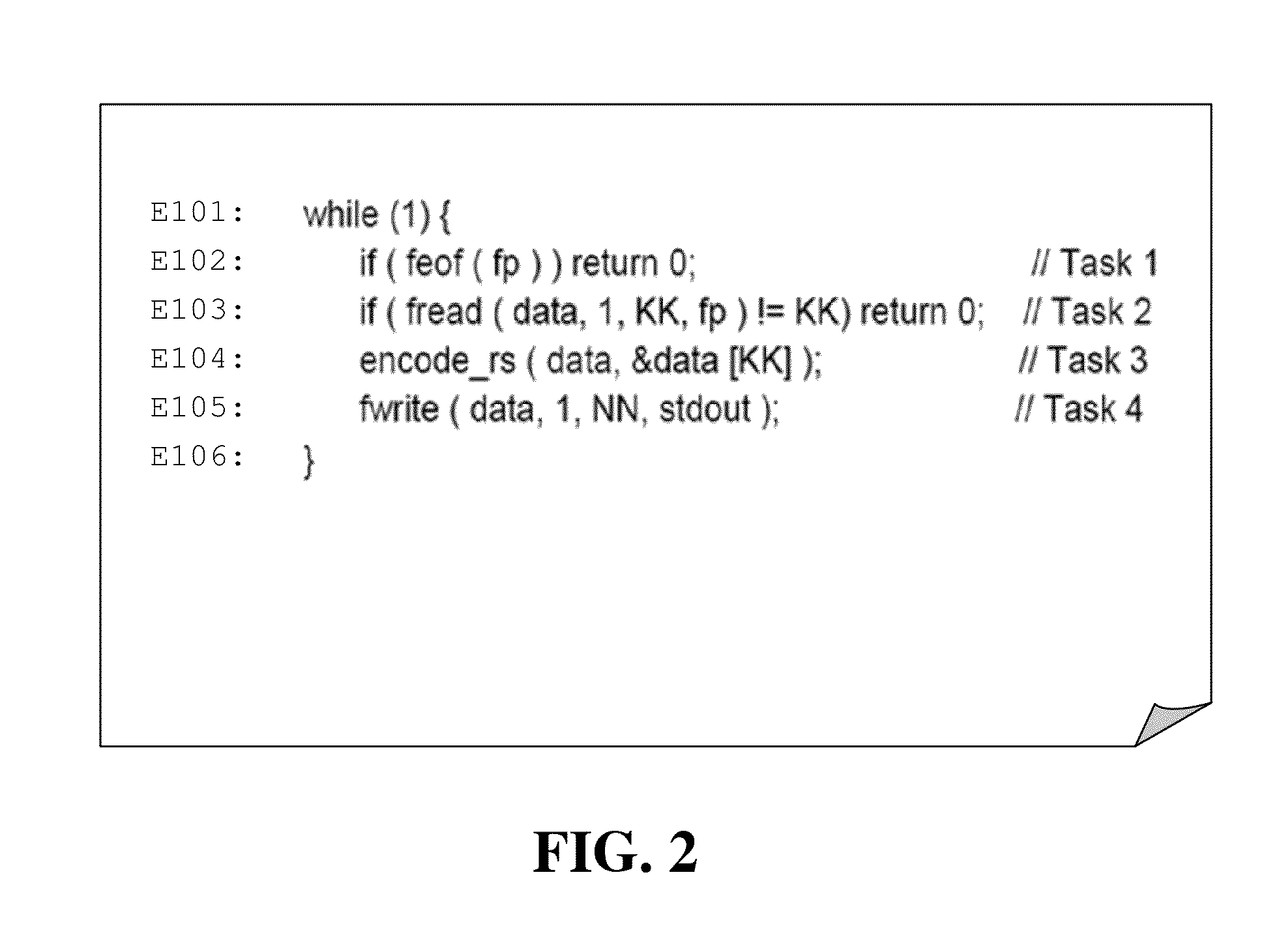Automatic pipeline parallelization of sequential code
a pipeline and sequential code technology, applied in the direction of program code transformation, instruments, computing, etc., can solve the problem that conventional parallelization methods are not effective for optimal decoupled software pipeline parallelization
- Summary
- Abstract
- Description
- Claims
- Application Information
AI Technical Summary
Benefits of technology
Problems solved by technology
Method used
Image
Examples
Embodiment Construction
[0011]FIG. 1 illustrates a system 10 for automatic pipeline parallelization of nested loops in sequential code, in accordance with embodiments of the present invention.
[0012]The system 10 comprises a source code annotator 20, a source code refactoring engine 21 and a parallelization advice generator 30.
[0013]The source code annotator 20 receives input of sequential code 11, annotates identified outermost loops in the sequential code 11 for dynamic profiling, and passes the annotated sequential code 13 to the parallelization advice generator 30. In response, the source code refactoring engine 21 receives a parallelization advice 15 for each annotated loop from the parallelization advice generator 30. Subsequently the source code refactoring engine 21 produces output of parallel code 19 by refactoring the loops of the sequential code 11 based on the received parallelization advice 15.
[0014]The sequential code 11 comprises at least one loop. The parallel code 19 produces an output same...
PUM
 Login to View More
Login to View More Abstract
Description
Claims
Application Information
 Login to View More
Login to View More - R&D
- Intellectual Property
- Life Sciences
- Materials
- Tech Scout
- Unparalleled Data Quality
- Higher Quality Content
- 60% Fewer Hallucinations
Browse by: Latest US Patents, China's latest patents, Technical Efficacy Thesaurus, Application Domain, Technology Topic, Popular Technical Reports.
© 2025 PatSnap. All rights reserved.Legal|Privacy policy|Modern Slavery Act Transparency Statement|Sitemap|About US| Contact US: help@patsnap.com



